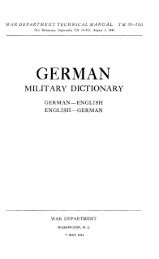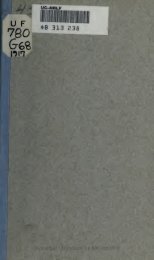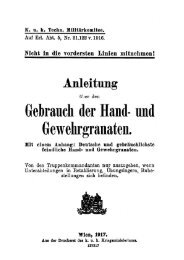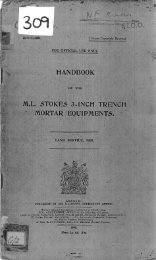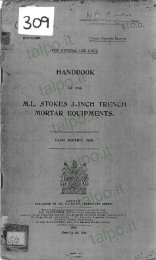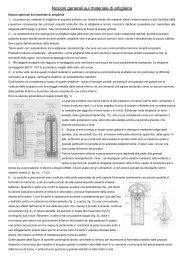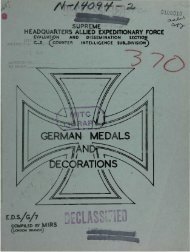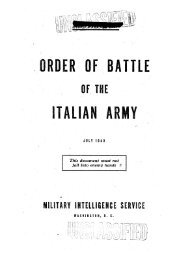Notes on German fuzes and typical French and Belgian fuzes
Notes on German fuzes and typical French and Belgian fuzes
Notes on German fuzes and typical French and Belgian fuzes
You also want an ePaper? Increase the reach of your titles
YUMPU automatically turns print PDFs into web optimized ePapers that Google loves.
24<br />
Designati<strong>on</strong>. — K.Z. 14 n.A.— Ean<strong>on</strong>en-Zunder, 1914, never Art<br />
(new design of 1914 pattern gun fuze).<br />
—<br />
Used with.<br />
Maximum<br />
G-un. Pattern of Shell. range,<br />
percussi<strong>on</strong>.<br />
yards.<br />
(77 cm.) fieldgun (96 n/A.) '14 H.E. 9,186*<br />
'15 H.E. <strong>and</strong> l<strong>on</strong>g gas 9,186<br />
shell (green cross)<br />
(7"62 cm.) infantry gun H.E. shell... 1,968<br />
(c<strong>on</strong>verted Kussian field<br />
gun)<br />
%<br />
Nature. — Percussi<strong>on</strong>: n<strong>on</strong>-delay acti<strong>on</strong> <strong>on</strong>ly.<br />
Material.— Zinc body <strong>and</strong> steel cap. The original X.Z. 14 fuze<br />
{see Bemarks) is made of brass, aluminium, or zinc, with either a<br />
brass or a steel cap.<br />
Remarks.<br />
—<br />
This fuze has largely replaced the originalK.Z.14<br />
fuze (n<strong>on</strong>-delay percussi<strong>on</strong>), which was introduced towards the end<br />
of 1914 at the same time as the 1914 pattern field gun shell, <strong>and</strong><br />
was liable to cause prematures in the bore. The K.Z. 14 fuze is,<br />
however, still used for l<strong>on</strong>g gas shell (green cross). The K.Z.14<br />
n.A. fuze differs internally from the K.Z. 14 fuze in that the<br />
safety powder pellet is in a brass sleeve ; externally, it differs<br />
<strong>on</strong>ly in the marking <strong>and</strong> in the shape of the cap, which is more<br />
pointed.<br />
Another variati<strong>on</strong> of the K.Z. 14 fuze, marked K.Z. 14 m.V.,<br />
was formerly used with the 7*7 cm. l<strong>on</strong>g shell, but has been<br />
replaced by the pointed fuze L.K.Z.16 m.V. It was a delay<br />
acti<strong>on</strong> percussi<strong>on</strong> fuze designed for ricochet fire.<br />
K.Z. 14 <strong>fuzes</strong> were often found marked K.Z.14 Z v K.Z. 14 Zl.,<br />
K.Z.14 Zp., <strong>and</strong> K.Z.14 Zw., <strong>and</strong> a K.Z. 14 n.A. Zl.is also found.<br />
The abbreviati<strong>on</strong>s Z., Zl., Zp. <strong>and</strong> Zw. probably refer to the zinc<br />
alloy{ZinMegierung, &c.) of which these <strong>fuzes</strong> are made, but this is<br />
not certain.<br />
0 or stamped <strong>on</strong> the head of a K.Z. 14 fuze indicates<br />
a det<strong>on</strong>ator of superior quality.<br />
* . With normal charge ; the maximum range with reduced charge is<br />
6,562 yards.



